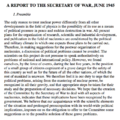Template:Selected anniversaries/June 12: Difference between revisions
No edit summary |
No edit summary |
||
| Line 52: | Line 52: | ||
||1980: Egon Sharpe Pearson dies ... statistician. | ||1980: Egon Sharpe Pearson dies ... statistician. | ||
||1985: Hua Luogeng dies ... mathematician famous for his important contributions to number theory and for his role as the leader of mathematics research and education in the People's Republic of China. | ||1985: Hua Luogeng dies ... mathematician famous for his important contributions to number theory and for his role as the leader of mathematics research and education in the People's Republic of China. | ||
| Line 67: | Line 65: | ||
||2015: Pierre Dolbeault dies ... mathematician. He is known for Dolbeault cohomology and the Dolbeault theorem. Pic. | ||2015: Pierre Dolbeault dies ... mathematician. He is known for Dolbeault cohomology and the Dolbeault theorem. Pic. | ||
</gallery> | </gallery> | ||
Revision as of 17:59, 6 February 2022
1577: Astronomer and mathematician Paul Guldin born. He will discover the Guldinus theorem, which determines the surface and the volume of a solid of revolution.
1936: Data from Canterbury scrying engine used to detect and prevent crimes against mathematical constants.
1937: Mathematician and academic Vladimir Arnold born. He will help develop the Kolmogorov–Arnold–Moser theorem regarding the stability of integrable systems.
1938: Alice Beta Paragliding published. Many experts believe that the illustration depicts Beta infiltrating the ENIAC program, although this is widely debated.
1945: Physicist James Franck brings the Franck Report to Washington. The report recommends that the United States not use the atomic bomb as a weapon to prompt the surrender of Japan in World War II.




